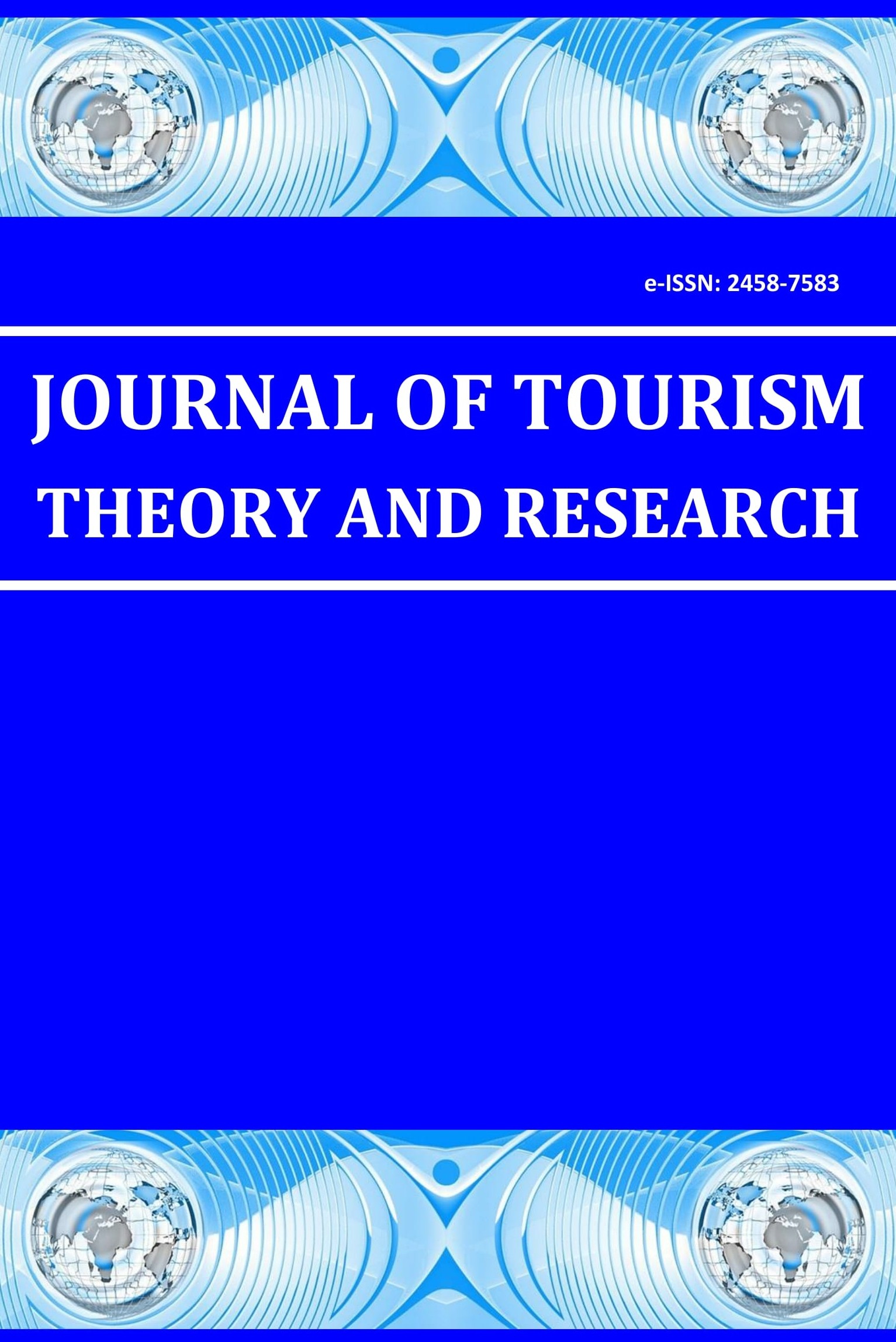Akıllı destinasyon: Turizm, inovasyon, girişimcilik ve çözüm bekleyen konular
akıllı destinasyon, turizm, inovasyon, girişimcilik, çözüm bekleyen konular
Smart destination: Tourism, innovation, entrepreneurship, challenges
smart destination, tourism, innovation, entrepreneurship, challenges,
___
- Bessant, j. & Tidd, J. (2015), Innovation and Entrepreneurship (3rd Edition), UK: John Wiley & Sons Ltd.
- Berrone, P. & Ricart, J.E. (2017). IESE cities in motion index 2017. Retrieved from http://www.iese.edu/research/pdfs/ST-0442-E.pdf?_ga=2.138617841.350304503.1509186746-186144533.1507035351
- Broadband Commission for Sustainable Development, (2016). The State of broadband: Broadband catalyzing sustainable development. Retrieved from http://www.broadbandcommission.org/Documents/reports/bb-annualreport2016.pdf
- Buntz, B. (2016, May 18). The world’s 5 smartest cities. Internet of Things. Retrieved from http://www.ioti.com/smart-cities/world-s-5-smartest-cities
- Carritech Telecommunications. (2017). Smart city infrastructure: Li-Fi, LoRa, and network slicing. Retrieved from http://www.carritech.com/news/smart-city-infrastructure-li-fi-lora-network-slicing
- Colldahl, C., Sonya, F. & Kelemen, J.E. (2013). Smart cities: Strategic sustainable development for an urban world [Unpublished Master’s Degree Thesis]. Retrieved from http://www.diva-portal.org/smash/get/diva2:832150/FULLTEXT01.pdf
- Couzineau-Zegwaard, E., Barabel, M., & Meier, O. (2013). From smart grid to smart city business ecosystem: Strategy to define the proper legitimacy for an energy utility firm. Electric Vehicle Symposium and Exhibition (EVS27), 2013 World, 1-11. Retrieved from http://ieeexplore.ieee.org/stamp/stamp.jsp?arnumber=6914871
- Hedrick-Wong, Y. & Choong, D. (2016). Global destination cities index by Mastercard. Retrieved from https://newsroom.mastercard.com/wp-content/uploads/2016/09/FINAL-Global-Destination-Cities-Index-Report.pdf
- Hollands, R. G. (2008). Will the real smart city please stand up? Intelligent, progressive or entrepreneurial? City, 12(3), 303-320.
- Krimmling, j. & Peter, S. (2014). Integration and evaluation of intrusion detection for CoAP in smart city applications. Communications and Network Security (CNS), 2014 IEEE Conference. Retrieved from http://ieeexplore.ieee.org/stamp/stamp.jsp?arnumber=6997468
- Menendez, C. (2017). Defining what makes a city a destination. Retrieved from https://newsroom.mastercard.com/press-releases/defining-what-makes-a-city-a-destination
- Merli, M. Z., & Bonollo, E. (2014). Performance measurement in the smart cities. In Dameri, R. P. & Rosenthal-Sabroux, C. (Eds.), Smart City (139–155). Cham, Switzerland: Springer. Retrieved from https://link.springer.com/chapter/10.1007/978-3-319-06160-3_7
- Nijman, H. (2011). Urban communication pavilion: the design of a multifunctional interactive object to introduce the smart city paradigm in public space (B.S. thesis). Retrieved from http://essay.utwente.nl/65146/
- Roland Berger. (2017). Think Act: Smart city, smart strategy. Retrieved from https://www.rolandberger.com/publications/publication_pdf/ta_17_008_smart_cities_online.pdf
- Skelia. (2017, July 27). Smart solutions for smart cities: are we there yet? [Blog]. Retrieved from https://skelia.com/articles/smart-solutions-for-smart-cities-are-we-there-yet
- Vaquero, M. G., & Saiz-Alvarez, J. M. (2016). Smart cities in Spain–Policy, sustainability, and the national plan: New political measures, agents, and sustainability. In Goswami, A (Eds.), Economic modeling, analysis, and policy for sustainability, 266-283. Hershey, PE: IGI Global.
- Başlangıç: 2015
- Yayıncı: Mahmut DEMİR
Çalışma sermayesi yönetiminin firma karlılığına etkisi: BIST turizm firmaları üzerine bir uygulama
Yiyecek içecek işletmelerinde tüketici satın alma kararında hatırlı pazarlamanın etkisi
Sosyal ve ekonomik değişimin otel çalışanlarının işe adanmışlık ve işten ayrılma niyetine etkisi
Impact of communication satisfaction and work-life balance on employee turnover intention
Proaktif kişilik ve kontrol odağının, kariyer tatmini ve yenilikçi iş davranışına etkisi
Borsa İstanbul havayolu yolcu taşımacılığı şirketlerinin döviz kuru risklerinin incelenmesi
Mehmet BEYAZGÜL, Erdinç KARADENİZ
Halka açık konaklama işletmelerinde maliyet yapışkanlığının analizi
Erdinç KARADENİZ, Fatih GÜNAY, Levent KOŞAN
Yiyecek içecek işletmelerinde hizmet kalitesi ve tüketici doyumu: Kastamonu örneği
